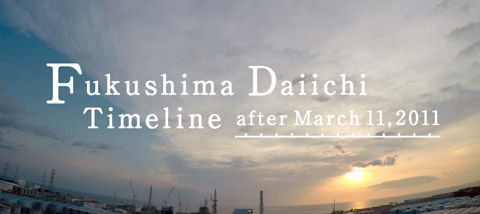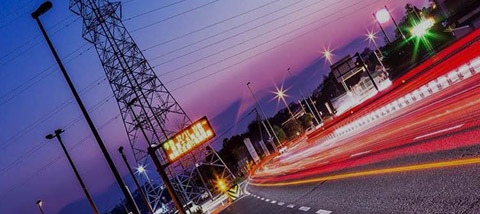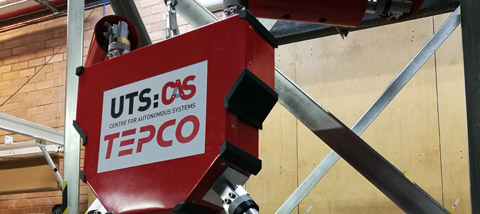2.1 Accident Recovery Progress
In December, 2011, the Government-based Nuclear Disaster Response Headquarters declared that 'Step 2' had been completed. The primary reasons for this declaration were that 1) 'the RPV bottom temperatures and the PCV internal temperatures were being kept approximately below 100 degrees C', 2) 'the release of radioactive materials was sufficiently being suppressed and kept under control', and 3) 'the mid-term safety of the Reactor Circulating Water Cooling System had been secured'.
1) The RPV bottom temperatures and the PCV internal temperatures being kept approximately below 100 degrees C
The temperatures of the RPV bottom and inside the PCV for Units 1-3 had decreased to approximately below 100 degrees C, as shown in Figures 5 and 6.
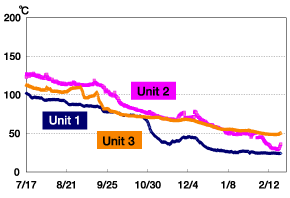
Figure 5. RPV bottom temperatures
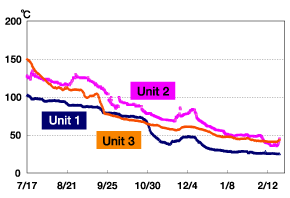
Figure 6. Temperatures inside PCV
<Temperature Rise indicated at Unit 2>
In early February 2012, the Unit 2 RPV bottom thermometer indicated a temperature increase. We conducted an investigation to find out the cause keeping in mind the possibility of a regional temperature rise or a simple thermometer malfunction. We monitored the temperature trend while doubling the water injection volume in stages.
The following factors led us to conclude that an instrument malfunction was the culprit and that the RPV bottom had been kept in a cool state: the temperature indications of the other instruments in the RPV and PCV decreased in response to the increase of water injection volume whereas the temperature indicated by the said instrument continued to rise, and an electric circuit check of the instrument showed a higher than usual resistance value.
In addition, an analysis of a gas sampling taken from inside the PCV revealed that xenon 135 was below the detectable limit. This indicates that a re-criticality did not occur. Furthermore, we confirmed that the concentration of radioactive cesium released from the reactor building remained unchanged.
2) The release of radioactive materials sufficiently suppressed and controlled
As shown in Figure 7, the release of radioactive materials into the atmosphere (per hour) has been sufficiently suppressed to approximately 1/80,000,000th (as of February, 2012) the amount immediately after the accident. This was achieved by suppressing steam generation from the PCV via controlling water injection. In addition, in order to control and suppress the release of radioactive materials even further, the PCV gas control systems have begun operations. (For more details, please refer to "2.2 Countermeasures to Protect Atmosphere" for details.)
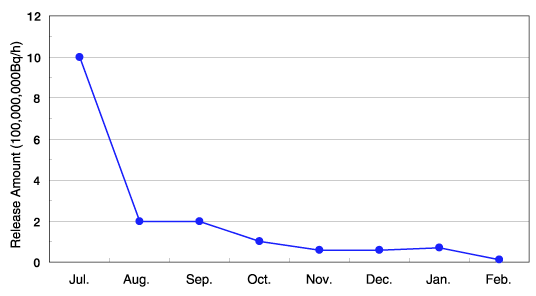
Figure 7. Release of radioactive materials (Cesium) per hour from the PCVs of Units 1 to 3
3) Securing the mid-term safety of the reactor circulating water cooling system
In order to secure the safety of the reactor circulating water cooling system, spare pipes, water sources and pumps have been prepared in the case of a breakdown of a part or whole of the reactor water injection line. (For more details, please refer to "2.4 Future Large-scale Earthquake and/or Tsunami Countermeasure" for details.)









